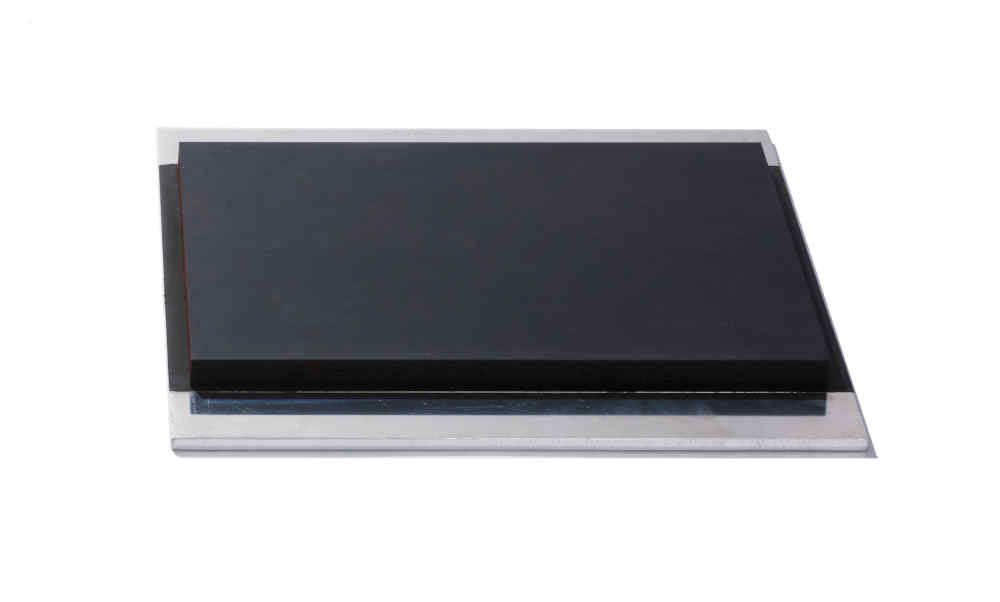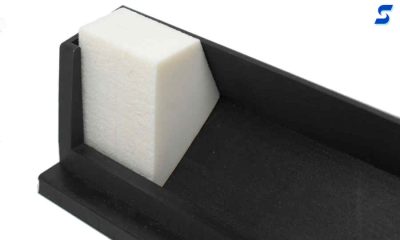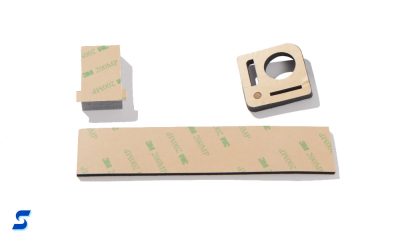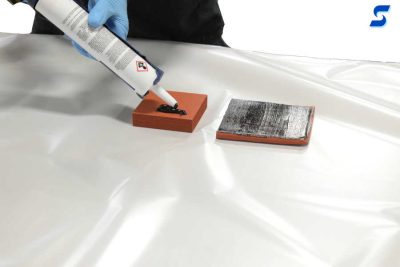Capabilities
Gasket Assembly Techniques
Guideline of typical gasket assembly methods into enclosures
Guideline of typical gasket assembly methods into enclosures


Gravity is the simplest fastening method but also an efficient one. For example, a free-standing enclosure may require a bottom seal that provides environmental protection. As long as the enclosure remains stationary, gravity will hold the seal in position and fill the gap between surfaces. Static seals where there is little or no relative motion between surfaces can more readily support this type of fastening since there aren’t large movements that could disrupt or dislodge the seal.
Mechanical methods for assembly include bolts, clips, screws, clamps, and other types of fasteners. Within a gasket, a mechanical attachment method is sometimes used in conjunction with a technique called mechanical trapping. For example, a trapped center o-ring in a pump can be held in place by vacuum pressure and the use of a clamp. In addition to facilitating secure connections, these trapped O-rings can accommodate minor instances of overpressure.

Pressure sensitive adhesives form a bond when light pressure is applied. In other words, they do not require a solvent, heat, or water for activation. Typically, PSAs are used with tapes that have an adhesive backing and a removable liner. Stockwell Elastomerics can supply seals and gaskets with PSAs that provide either temporary or permanent fastening, and in different chemistries depending on the application environment and substrate materials. For example, BISCO™ cellular silicones are available with either silicone or acrylic PSA adhesives.
Stockwell Elastomerics carries PSAs for low surface energy substrates such as silicones and some plastics. General purpose, stock, and repositionable adhesives are also available. Specialty PSAs can provide stiffening, thermal or electricity conductivity, or resistance to extreme temperatures. Very high bond (VHB) adhesives from 3M are available for die cut parts and for backing elastomeric materials. Data sheets for these adhesives and other materials are available for download.
For gaskets required in more traditional assembly techniques, Stockwell Elastomerics also offers kiss cutting and adhesive lamination. Kiss cutting cuts through a gasket material such as silicone foam while leaving the backing layer intact. An installer can then peel away the backing and, if a pressure-sensitive adhesive (PSA) is used, attach the gasket with light pressure. Because adhesives liners can be difficult to handle, Stockwell Elastomerics can kiss cut with cards so that installers can pick parts from stiffer backings. This technology has been developed to work with a variety of PSAs depending on the customer requirements for positionability, temperature, performance in assembly and during operation, as well as material to be bonded with the gasket during assembly.
Like PSAs, heat activated adhesives are applied to a tape that has a carrier and a release liner. Unlike PSAs, however, heat sensitive adhesives will not bond at room temperature. Instead, they only become sticky and are able to bond at elevated temperatures. Heat activated adhesives require curing to obtain their end use properties but form strong and durable bonds. Silicone and acrylic foam tapes with a heat activated adhesive on one side can be used to bond seals, gaskets, and weatherstripping to substrates for outdoor applications.
Heat activated adhesives can provide high performance bonding but applying them to elastomers can be challenging for some customers to perform at their own facilities. Along with investments in ovens and energy usage, heat activated adhesives are messy to apply and require time consuming cleanups. With silicone adhesives, off gassing that can cause contamination is also a concern. Stockwell Elastomerics uses heat activated adhesives, including silicone products, at its manufacturing facility and can perform adhesive lamination for customers.

High-performance RTV silicones are applied directly to flanges/enclosures and then cure at room temperature to form tough, flexible rubber gaskets. They use atmospheric moisture and are better for extreme bonding. Product selection is especially important because certain curing mechanisms can affect enclosure coatings. Stockwell Elastomerics can help customers select the right adhesive for specific applications as part of its value added services.
Occasionally, RTV silicones are used as formed-in-place (FIP) gasket materials. Although some installers apply high performance RTVs to less expensive parts, RTV gasket sealants are generally used instead. These adhesive products can strengthen and reinforce gaskets made of less expensive materials while imparting enhanced water or chemical resistance.
Elastomers can be difficult to bond, even with the proper adhesive. Because of their low surface energy, cured silicones may require surface preparations such as corona, plasma, flame treatments, or chemical bonding techniques. The surfaces of elastomers must also be free from contaminants, and adhesives must be stored and applied properly for optimum reliable performance. Stockwell Elastomerics is skilled at bonding silicones and other elastomers to each other or to plastics or metals. Examples include laminating silicone foam or sponge to plastic films or metal plates.
Stockwell Elastomerics provides compression and liquid injection molding (LIM) services. By loading a component part such as a threaded fitting into a compression mold, it’s possible to form elastomeric parts around non-elastomeric inserts. Insert molding reduces the number of individual components in an assembly and eliminates secondary operations to produce seamlessly integrated products. These parts will “bond” to the substrate elastomer either by mechanical means or special chemical additives. This assembly technique can also be used to mold a softer silicone around a harder plastic.
Contact Us for further assistance with customer assembly techniques.
BISCO® is a registered trademark of Rogers Corporation.